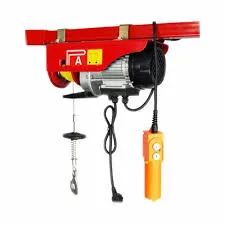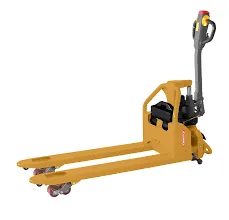When you work in industries where heights are part of day-to-day operations, understanding fall protection is crucial. Fall protection systems are not just regulatory requirements but essentials that ensure safety and peace of mind for workers. Here’s a comprehensive look at the various types of fall protection, underscoring their importance through both expertise and real-life application.

In construction and maintenance, fall hazards are ubiquitous. Not only do they endanger lives, but they can also lead to significant financial setbacks due to liability claims and halted operations. It's essential to understand the different types of fall protection systems available, each designed to cater to specific needs and scenarios.
Personal Fall Arrest Systems (PFAS) are arguably the most familiar to workers. These systems are designed to safely stop a fall before the worker hits a lower level. Essential components of PFAS include a full-body harness, a connecting device such as a lanyard, and an anchor point capable of supporting a high load. When implemented correctly, PFAS can mean the difference between life and death. Leveraging this system involves expertise in correct fitting and regular inspections to maintain its reliability and effectiveness.

Guardrail Systems offer a more passive solution. Unlike PFAS, which activates only when a fall occurs, guardrail systems prevent falls from happening by creating physical barriers between workers and edges. This method is particularly trustworthy because it doesn't require active intervention from workers once set up correctly. The importance of using properly constructed guardrails cannot be overstated, as improper installs can lead to tragic outcomes.
Safety Nets, another type of fall protection, are typically used in situations where potential falls could be from great heights, such as in bridge construction or high-rise projects. They are designed to catch workers who fall and prevent them from hitting the ground. Safety nets require significant expertise to install correctly, as their effectiveness depends on proper tensioning and secure anchoring.
Positioning Systems are less about arresting a fall and more about allowing workers to be in a safe and stable position while performing their tasks. These systems are particularly beneficial for maintenance workers who often need both of their hands-free to complete their work. It's essential that such systems comply with safety standards and that workers undergo thorough training on their use to maximize their effectiveness.
fall protection types
Finally, Warning Line Systems and Controlled Access Zones (CAZs) are used to alert workers about potential fall hazards on site.
These are often used in conjunction with other fall protection measures. While these systems do not prevent a fall, they act as a crucial part of a larger safety strategy, ensuring workers are always aware of their proximity to danger.
Selecting the right type of fall protection requires not only knowledge of the systems themselves but also an understanding of the specific work environment and the nature of the tasks being performed. Recognizing this, safety specialists often bring in their vast expertise to tailor fall protection solutions to individual project needs, ensuring they meet both regulatory standards and practical requirements on-site.
Real-life experiences consistently show that integrating multiple systems provides the best protection. For instance, using guardrails along with a PFAS offers a dual layer of defense—guardrails prevent the fall from occurring, while PFAS serves as a backup should a worker accidentally end up in a fall situation.
Each fall protection type has its strengths and limitations, and the mark of expertise lies in selecting and combining them to maximize safety without compromising on productivity. Authoritative figures in safety planning often stress the need for regular reviews and updates to these systems, ensuring they evolve with technological advancements and changing work practices.
Ultimately, trust in fall protection relies on both the quality of the equipment and the training of the personnel using it. Employers must foster an environment where safety is prioritized, with constant reassessment and adherence to best practices. This approach not only safeguards the workforce but also enhances overall company reputation and operational efficiency.








